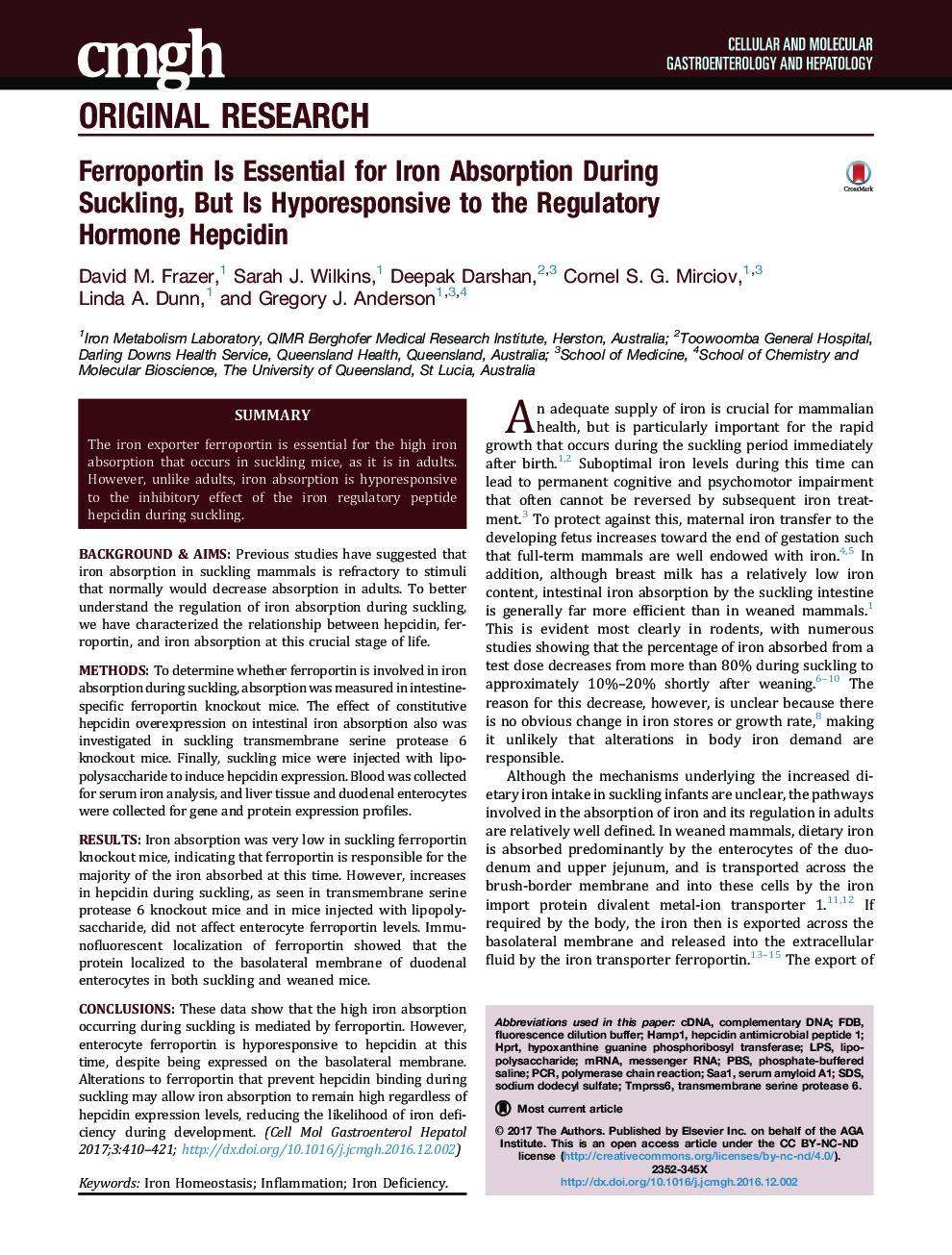| Article ID | Journal | Published Year | Pages | File Type |
|---|---|---|---|---|
| 5517229 | CMGH Cellular and Molecular Gastroenterology and Hepatology | 2017 | 12 Pages |
Background & AimsPrevious studies have suggested that iron absorption in suckling mammals is refractory to stimuli that normally would decrease absorption in adults. To better understand the regulation of iron absorption during suckling, we have characterized the relationship between hepcidin, ferroportin, and iron absorption at this crucial stage of life.MethodsTo determine whether ferroportin is involved in iron absorption during suckling, absorption was measured in intestine-specific ferroportin knockout mice. The effect of constitutive hepcidin overexpression on intestinal iron absorption also was investigated in suckling transmembrane serine protease 6 knockout mice. Finally, suckling mice were injected with lipopolysaccharide to induce hepcidin expression. Blood was collected for serum iron analysis, and liver tissue and duodenal enterocytes were collected for gene and protein expression profiles.ResultsIron absorption was very low in suckling ferroportin knockout mice, indicating that ferroportin is responsible for the majority of the iron absorbed at this time. However, increases in hepcidin during suckling, as seen in transmembrane serine protease 6 knockout mice and in mice injected with lipopolysaccharide, did not affect enterocyte ferroportin levels. Immunofluorescent localization of ferroportin showed that the protein localized to the basolateral membrane of duodenal enterocytes in both suckling and weaned mice.ConclusionsThese data show that the high iron absorption occurring during suckling is mediated by ferroportin. However, enterocyte ferroportin is hyporesponsive to hepcidin at this time, despite being expressed on the basolateral membrane. Alterations to ferroportin that prevent hepcidin binding during suckling may allow iron absorption to remain high regardless of hepcidin expression levels, reducing the likelihood of iron deficiency during development.
